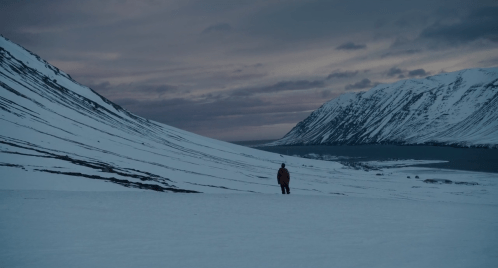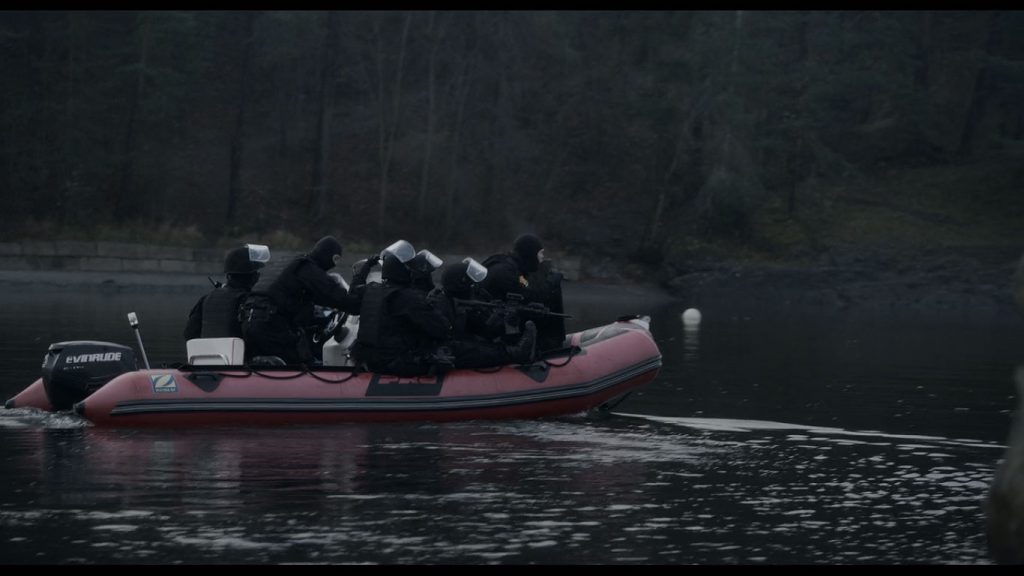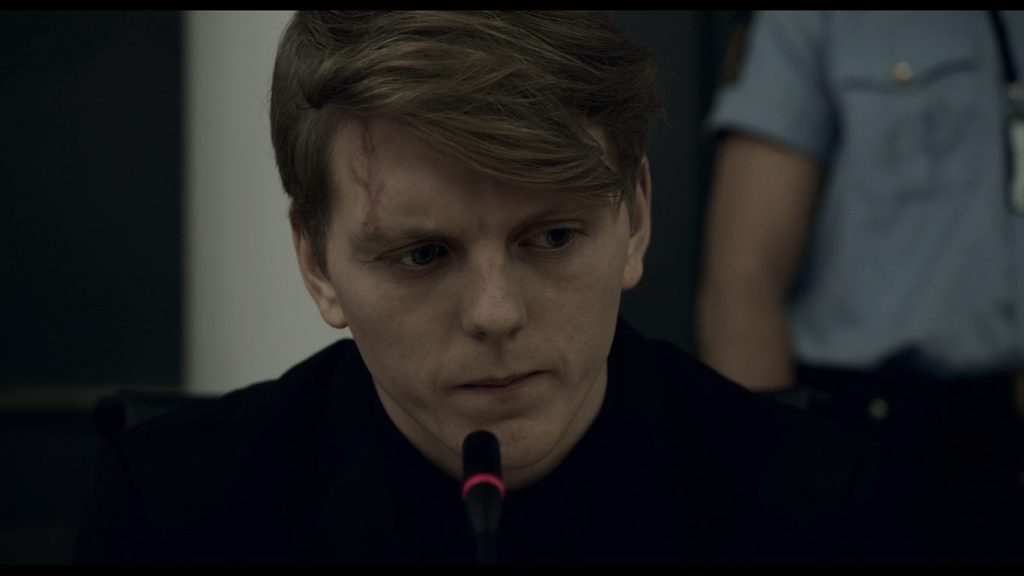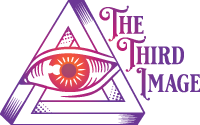22 July



It was only in 2011 that the terrorist attack on Norway’s government buildings and the island of Utoya took place, in which 77 people, mostly children, were murdered. Although books and countless accounts have been published on what happened, some are questioning whether 2018 was too soon for a film to be made on the subject. However, I’d say the timing is perfect, in a political environment leaning increasingly towards nationalist sentiment, particularly using terrorist attacks as arguments for tightening borders and fuelling fear and segregation, ironic considering that the attacker, Breivik, was a home-grown Norwegian himself whose hate-filled rhetoric and delusions are the same ones then repeated by people who fear such terrorist attacks.
It is pertinent therefore to point out, that 22 July is not about the firing onto children on Utoya island itself. Only a small part of the film is dedicated to portraying that horrific event. The larger part of the film concerns itself with the aftermath. How does a society heal? How does a family stick together? How can justice run its course?
The first act of the film, which includes the build-up to the attacks, the attacks themselves, and then the police intervention, are a masterclass in structure and tension. No surprise, as we’re in the good hands of Paul Greengrass, whose journalistic visual and visceral style in United 93 and the Bourne films has been replicated several times over by others and become a stylistic staple. Watching the horrific events unfold is intense, painful, gut-wrenching, and can be angering, and Greengrass handles them with tact and restraint.
The story then focusses on a number of characters, namely Breivik as he sits in prison and prepares for his trial, his lawyer who is bonded to the ethics of blind justice and had previously defended a Neo-Nazi and now receives death threats, and most importantly, Viljar, a young student who was on Utoya and survived, albeit with a long physical recovery period, bullet fragments in his brain, and blind in one eye.
The trauma of the event haunts him and he struggles to settle back to a normal life. It is by following Viljar that we are guided through the film’s message, which unfolds as the young man himself heals. The struggle of a society shocked and angry is portrayed through the shock and anger that Viljar battles with. It’s a narrative technique brilliantly and sincerely executed.
In life we are often presented with several paths in front of us, forced to choose, and we fear to take any in case the one we choose pulls us toward further dread. But sooner or later a choice must be made, achieved by first searching for and finding our inner strength, and acting on it – in turn, strengthening us further, as individuals, as a society, as a civilisation.
